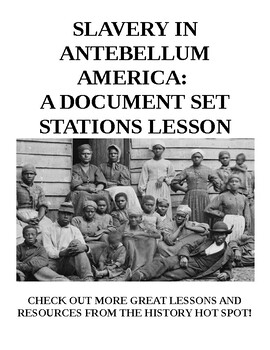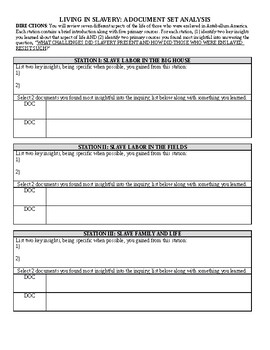Slavery in Antebellum America: A Document Set Stations Lesson
- Word Document File
What educators are saying
Description
Immerse your students in a primary source-based study of the lives of the enslaved during the Antebellum Era. Using seven different document sets of five primary sources each, students learn about the following aspect of slavery:
- Labor in the "Big House"
- Labor in the Fields
- Family Life
- Internal Slave Trade
- Religion
- Punishment
- Resistance
Primary sources range from visual images to WPA interviews to slave narrative excerpts. [NOTE: some sources deal with difficult and violent content, thus the product is in Word format if wishing to omit a document]
This product includes: teacher lesson plan; seven different document sets with each accompanied by a brief introduction to the topic; student document analysis chart; and exit ticket with rubric.
Looking for more resources to teach slavery in the Antebellum era? Check out "The Life of a Slave: An Introduction to Antebellum Slavery PowerPoint" or "The Southern Defense of Slavery: A Primary Source Activity."





